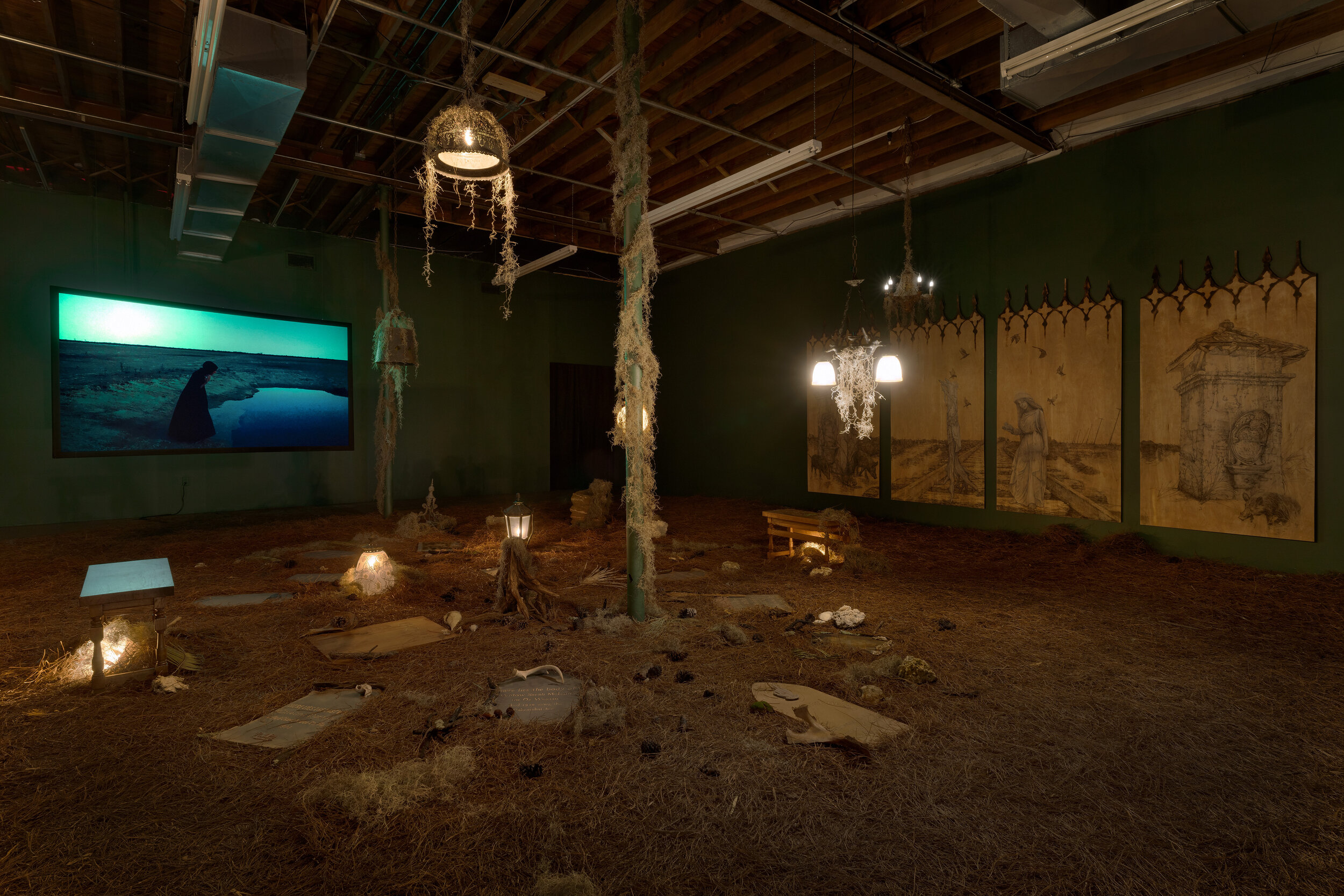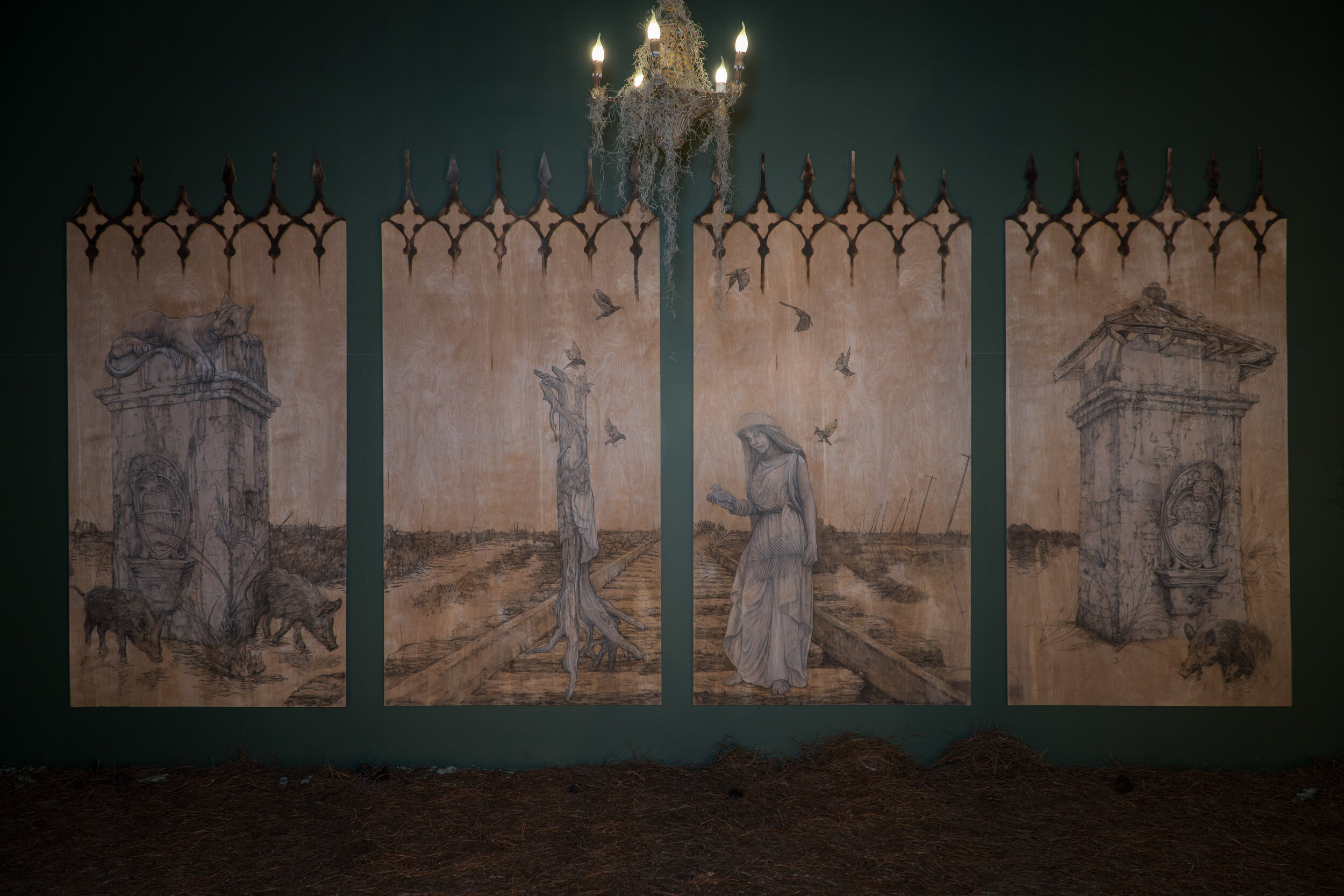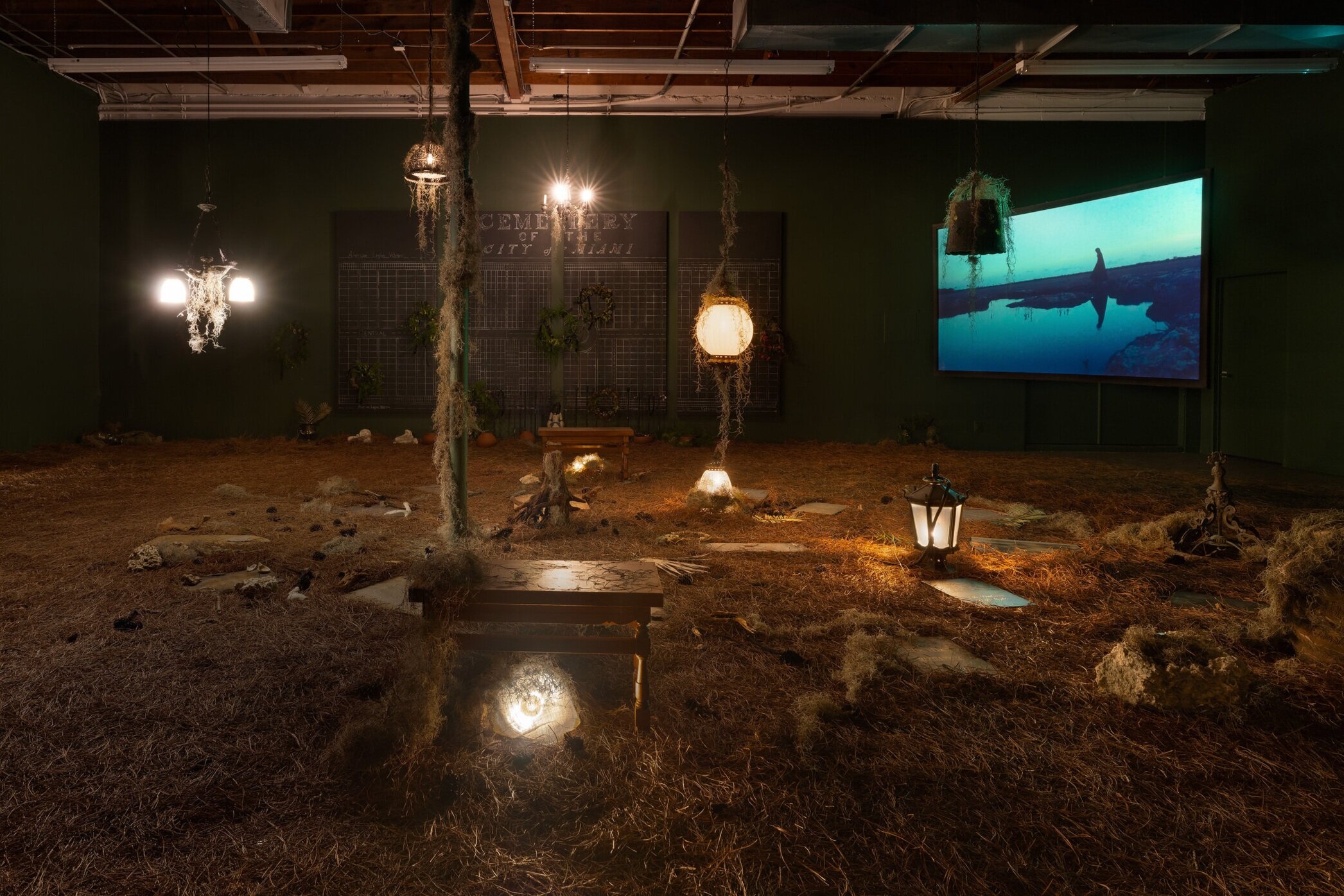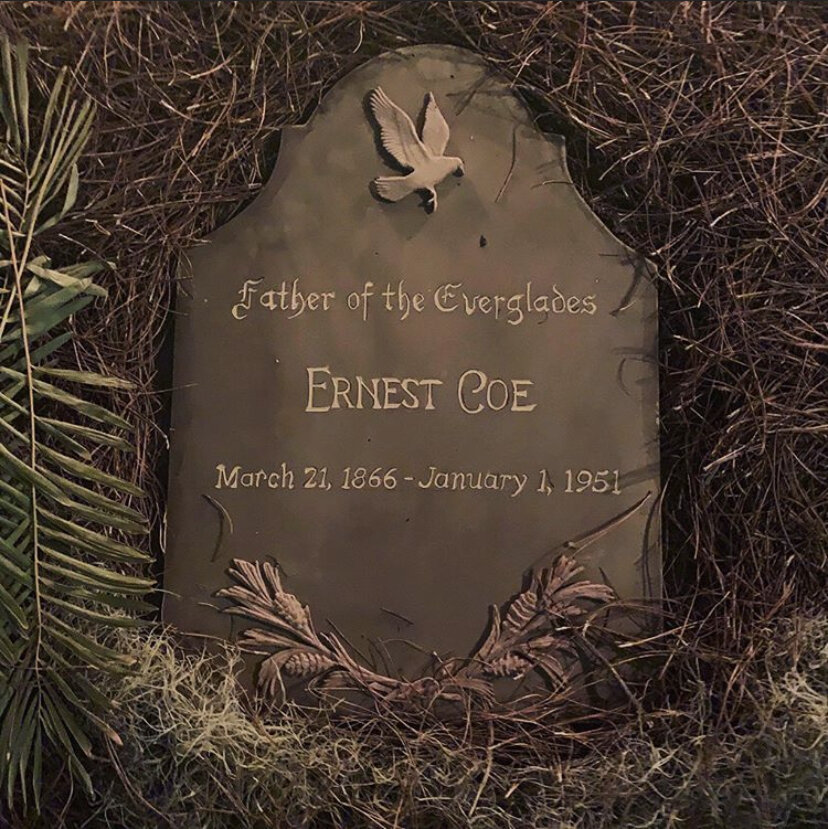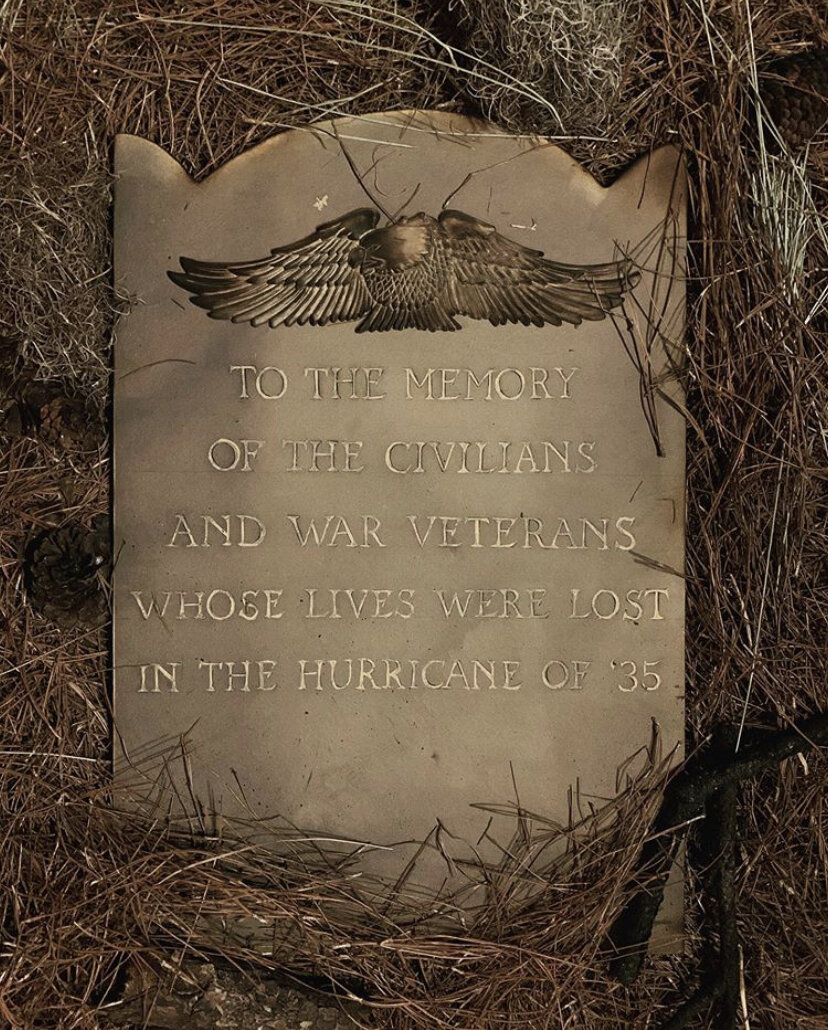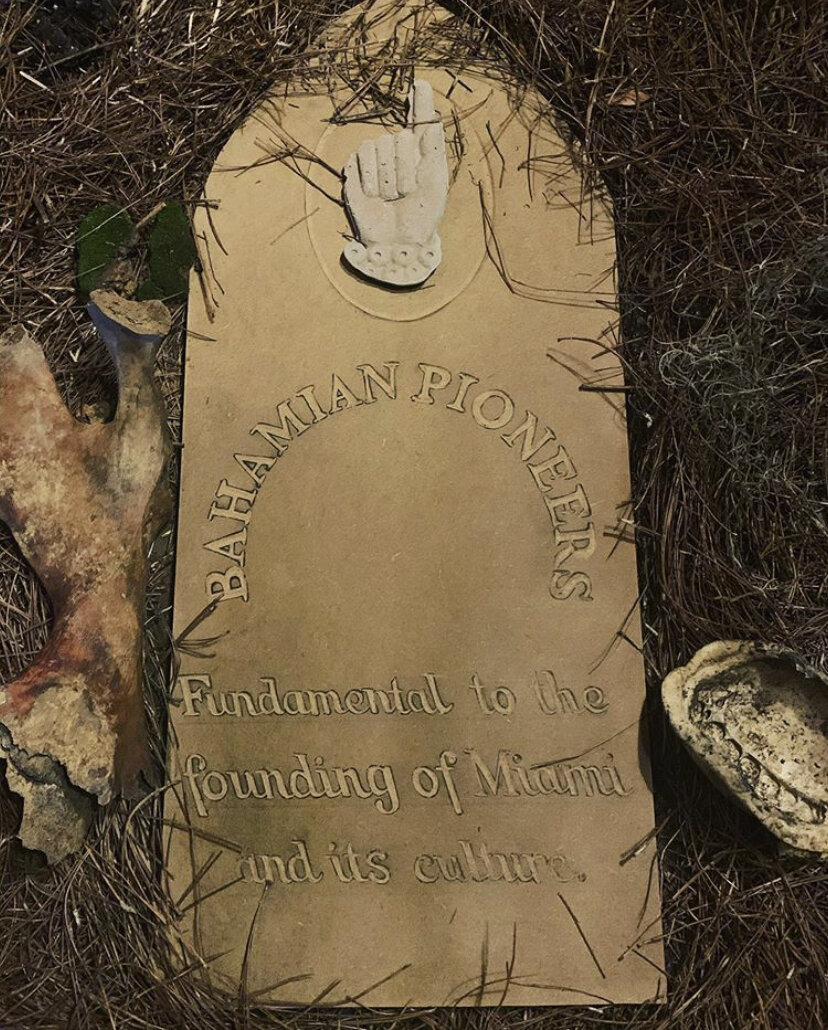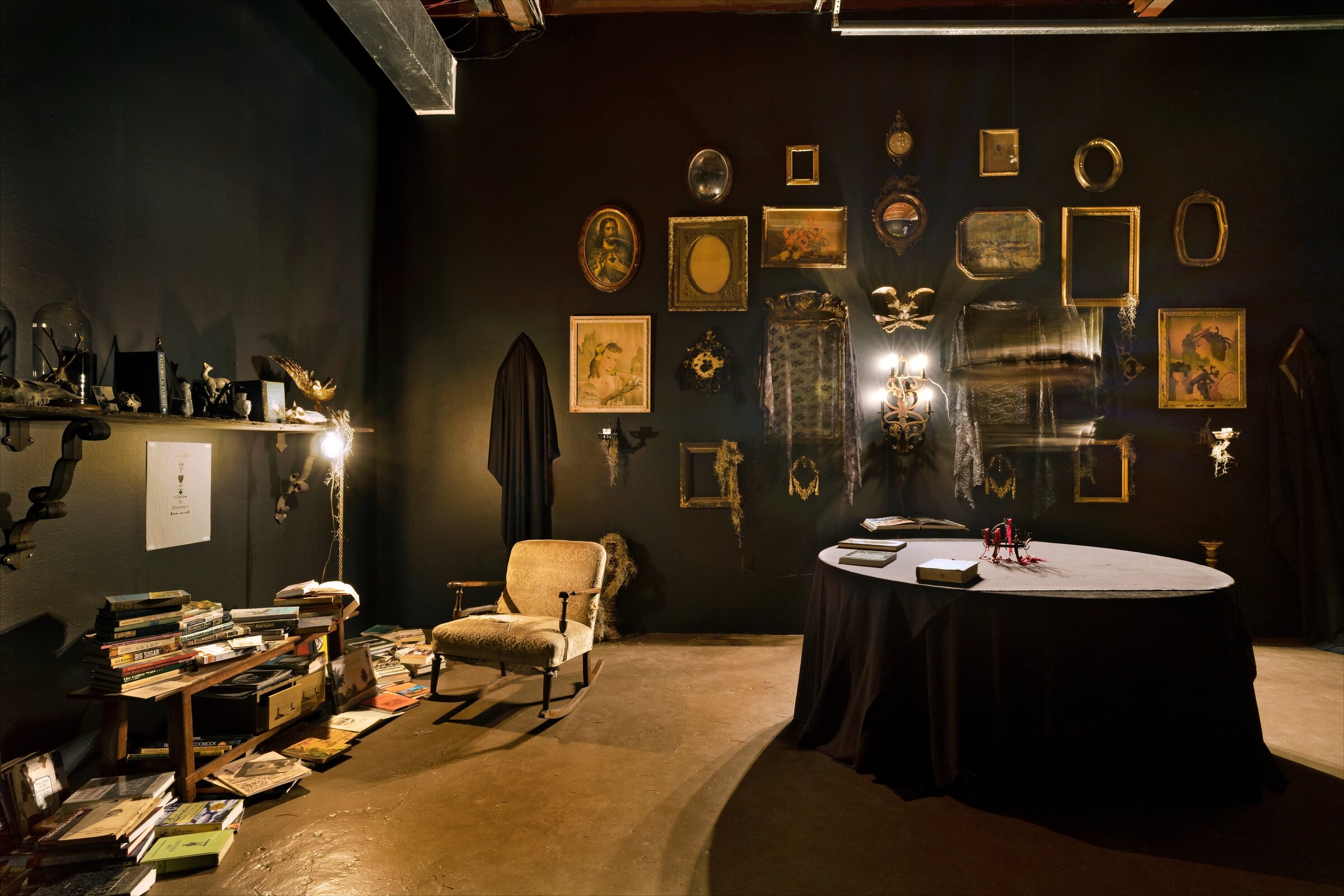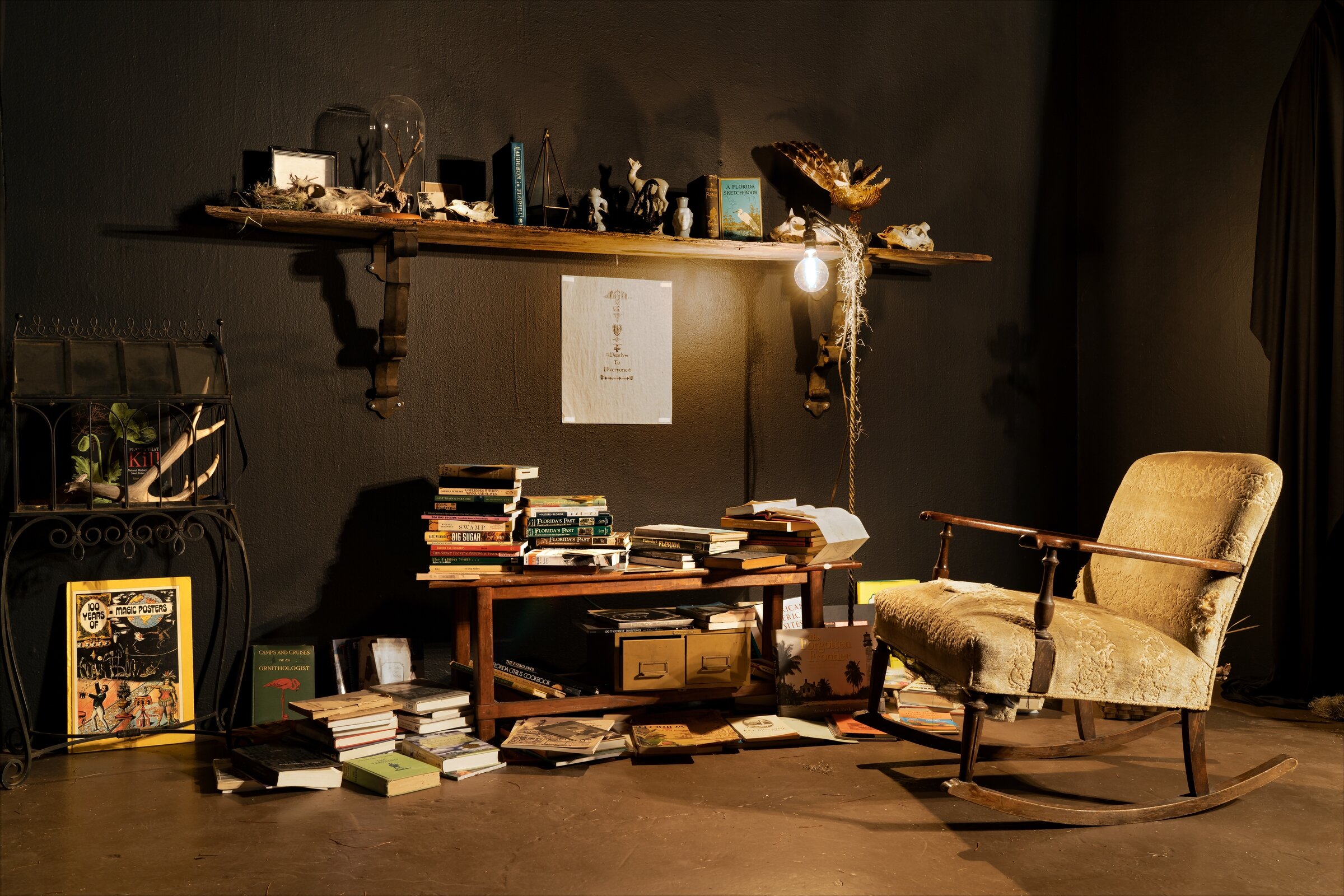Looking Back at Christina Pettersson: In the Pines | By Nicole Martinez
Commissioned text written by Nicole Martinez
Victorian society was obsessed with death. Rather than fear their worldly demise, those born into this austere era of the late 1800s drew plans for rituals and ceremonies that would honor their lives on earth. Celebrating the dead wasn’t considered a morbid extravagance but rather a means of healing your grief and centering the memory of your deceased in eternal remembrance. Cemeteries were designed as botanical gardens and parks, where picnics and carriage races and frequent tours would connect the living to their dearly departed. If death was a rite of passage, honoring the dead was an essential element of unlocking and understanding your past.
In Christina Pettersson’s In the Pines — which was on view at Locust Projects this summer — Pettersson resurrects Florida’s own forgotten history, creating a beautifully somber graveyard and memoriam to both its pioneering figures and its disappearing natural ecosystem. For the exhibition, Pettersson completely transformed Locust Projects’ Main Gallery and Project Room, creating a moody, supernatural backdrop to display the months of research — and years of vision — that drive Pettersson’s multimedia practice. Scattered slash pine needles litter the floor, large scale drawings created from the charcoal ash of a burned rockland pine forest cover the main wall, and grave markers bearing the names of Florida’s ancestors erected a living monument to a rapidly expiring Florida ecosystem. In the Pines captures the spirit of the Victorian inclination for the worshipping of the dead, enveloping visitors in a peaceful, quiet and meditative journey that rewrites the state’s complicated history and draws attention to its natural habitat’s certain demise.
Though Pettersson often works site specifically, she considers In the Pines one of her most ambitious projects yet. Where her work has always explored both ecological histories and Floridian lore with an eerie quality, In the Pines stitches these narratives together by creating a space for mourning, bereaving the near total destruction of Florida’s original terrain and while laying rest to the absolving of its ruthless, bloodthirsty colonizers as regional heroes. Instead, in In the Pines Pettersson turns her gaze to Florida’s undersung heroes - its native rockland Pines habitat, its Black, indigenous, and Caribbean pioneers, its frontier women and bright-green singing birds.
“I feel like I finally brought all the aspects of my practice and my life into this exhibition,” she says from her studio at the Bakehouse Art Complex, where the show’s centerpiece large charcoal drawings, an apocryphal end-of-days scene entitled, Never Any More at This Place, 2020 — are currently displayed. “The show really helped me realize that I’m not interested in being a studio artist anymore. I want to activate people and histories and talk about them more effectively.”
In the Pines pushes those boundaries and stays true to Pettersson’s haunting visual aesthetic, in an immersive installation that recreates a cemetery and evokes a mythical Victorian swamp. The dimly lit room is illuminated only by the glow of iron chandeliers and Victorian lanterns, as visitors parse their way around tombstones buried under slash pine needles and columns wrapped in draped moss. A video work featuring Pettersson donning a black Victorian shroud hangs in the center of the room; pine needles crunch under the artist’s feet as she roams the last large swath of Pine Rockland habitat in the Everglades National Park while a cover of the song “In the Pines” lends a quiet melancholy for exploring Pettersson’s gravesite.
Accompanied by a Field Guide detailing the significance of each marker, Pettersson memorializes people, animals, and moments on her tombstones, borrowing inspiration from imagery at one her favorite local haunts, the Miami City Cemetery. For this exhibition, Pettersson was interested in telling the stories that are largely erased from Miami’s history. Through an extensive research process that involved visiting numerous archives, Pettersson chose to mark her graves with the names and histories that are so often left out of the history books by the powerful white men who commission them - shining a light on Mary Brickell instead of Carl Fisher, for example, or recognizing the enormous contribution of the Bahamian pioneers that tropicalized South Florida’s agriculture, bringing fruits like pineapple and mango along with the ancestral wisdom needed to survive hurricanes and sweltering tropical climates.
Other figures, like Arthur McDuffie — who Pettersson discovered was murdered on the same block where Locust Projects sits in the present-day — and Ernest Coe, who is rarely recognized for his immense efforts to preserve the Everglades, are offered memoriams to right injustices. Eccentric recluses like the Martha Frock and the Ox-Woman are a fabled homage to the renegade women that truly shaped Floridian culture, in a manner that women were so often not permitted at that moment in time. The exhibition’s Seance Room — located in Locust Project’s Project Room — offers visitors an opportunity to delve into Pettersson’s research, a critical aspect of Pettersson’s motivation behind the show.
With mourning as an act of resistance emerging as an important premise, In the Pines is a stunning and hopeful monument to an end of days that seems necessary to chart a more inclusive and caring path forward.
“The bales of history of falling and people are becoming more aware of what it is that we don’t know,” she says. “This exhibition is a love letter to my city; it’s a way of rewriting our narrative and making available today what wasn’t so accessible before, so that we can contemplate mortality, our past and our ancestry to better prepare for our future.
Learn more about Christina Pettersson’s In the Pines in the following video interview, filmed by Zachary Balber and his team:
ABOUT THE ARTIST
Born in Stockholm, Sweden, Christina Pettersson has lived in Miami, FL most of her life. Thus her last two solo exhibitions, in Everglades National Park and at the historic Deering Estate on Biscayne Bay, reflect her lifelong passions in her hometown. Recent shows include the Perez Art Museum Miami (PAMM), Museum of Contemporary Art, Miami, Girls Club, Fort Lauderdale, the Art and Culture Center of Hollywood, FL, Launch F18, New York, NY. She has exhibited at other museums, particularly in the South, such as the Birmingham Museum of Art, AL, Columbus Museum of Art, GA, Baltimore Museum of Art, MD, Wiregrass Museum of Art, AL, and the Naples Museum of Art, FL. She has received the South Florida Cultural Consortium Fellowship thrice, the largest regionally sponsored grant in the US. She received a Fulbright Grant to return to Sweden in 2000, attending the Valand School of Fine Arts in Gothenburg. She is the recipient of a 2019 Creator Award Ellie’s Grant from Oolite Arts and currently has a studio at the Bakehouse Art Complex in Wynwood.
Pettersson has attended residencies at Yaddo, Ucross, Vermont Studio Center, VCCA, The Studios of Key West, Atlantic Center for the Arts Master Program under Inka Essenhigh, and a year long program at the Deering Estate. Taking her to remote and historic places, they have a profound effect on her work. Most influentially she spent a month inside Everglades National Park under the AIRIE residency program in 2015. This residency solidified her desire to focus her artwork on the combination of her local environment, history and community outreach. She has also curated and staged group performances and public programming throughout her native South Florida. In conjunction with exhibitions and organizations such as AIRIE, Girls Club, and various historical entities she collaborates to bring these themes to life in the community- thru walking and bus tours of neighborhoods, cemeteries and the local environment, guest lectures, workshops, book clubs, even shadow puppet performances. These events have allowed Pettersson’s work to become a true engagement with the community, dissolving boundaries, utilizing the talents of a variety of people and organizations with limited resources, and educating and delighting by innovative means.
View the artist’s full CV here.
Photo: Eli Peck
ABOUT THE WRITER
Nicole Martinez is the founder and director of Culture Conductor.
A veteran arts and culture journalist and communications consultant, Nicole works with artists, cultural institutions, and art-centric companies on developing and implementing integrated communications campaigns. Her clients make up the fabric of Miami's cultural community, and include institutions like Fountainhead Residency and Studios, Faena Art, the Miami Freedom Tower and Museum of Art and Design, the Bakehouse Art Complex, and Frost Science Museum.
As an independent journalist and filmmaker, her work has appeared in a variety of the world’s leading publications, including ARTnews, Cultured, The Art Newspaper, Hyperallergic, and Wallpaper*. In 2019, she was recognized for her work as an arts journalist by the Society of Professional Journalists Florida. She was also awarded a Special Jury Mention by Oolite Arts for her short documentary film, La Peña.
Locust Projects 2020-2021 exhibitions and programming are made possible with support from: The John S. and James L. Knight Foundation; The Andy Warhol Foundation for the Visual Arts; The Miami-Dade County Department of Cultural Affairs and the Cultural Affairs Council, the Miami-Dade County Mayor and Board of County Commissioners, The Children's Trust; Berkowitz Contemporary Foundation; The National Endowment for the Arts Art Works Grant; Hillsdale Fund; the Albert and Jane Nahmad Family Foundation; VIA Art Fund | Wagner Incubator Grant; Funding Arts Network; The Jorge M. Pérez Family Foundation at The Miami Foundation; Susan and Richard Arregui; Kirk Foundation; Miami Salon Group; Scott Hodes; Jones Day; Community Recovery Fund at The Miami Foundation and the Wege Foundation; and the donors to the Still Making Art Happen Campaign and Locust Projects Exhibitionist members.

